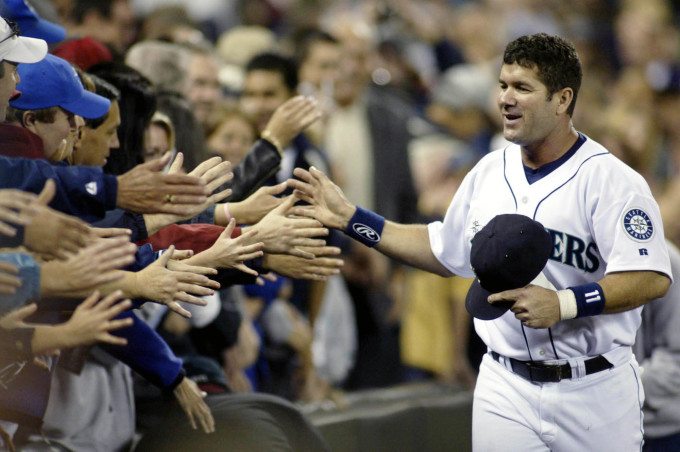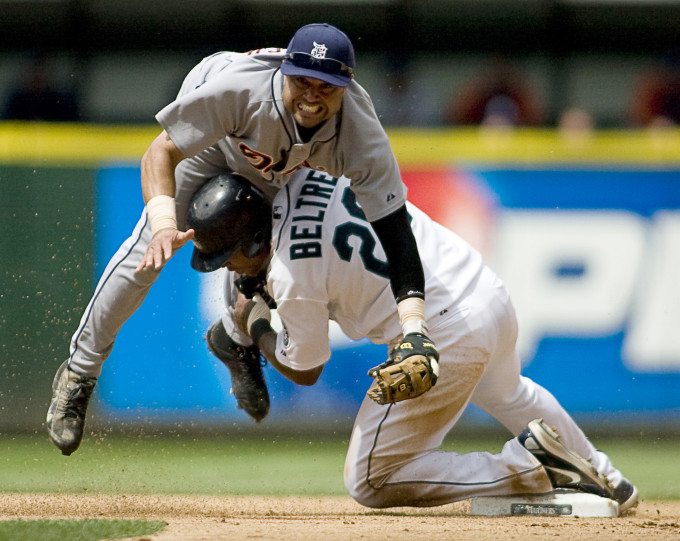
All images by Jim Bryant. Used with permission.
https://www.facebook.com/jim.bryant1www.linkedin.comhttps://twitter.com/phojoimjim@jimbryantphotography.comhttps://pa.photoshelter.com/c/jimbryanthttps://jimbryantphotography.blogspot.com360.731.1944
Photographer Jim Bryant has been shooting sports for longer than many of us have even been alive, and he believes that good baseball photography is 5% being there and 95% dumb luck. Jim, who is well into his 60s, still has perfect 20/20 vision and is typically assigned to photograph the Mariners.
Originally from Columbus, Georgia Jim first got into photography when he would watch his stepfather develop and contact print his 4 x 5 Speed graphic negatives in the kitchen of their home. Today, he totes around three cameras and some very big glass. His job typically entails getting the shots and transmitting the images to the wire services quickly.
Phoblographer: Talk to us about how you got into photography.
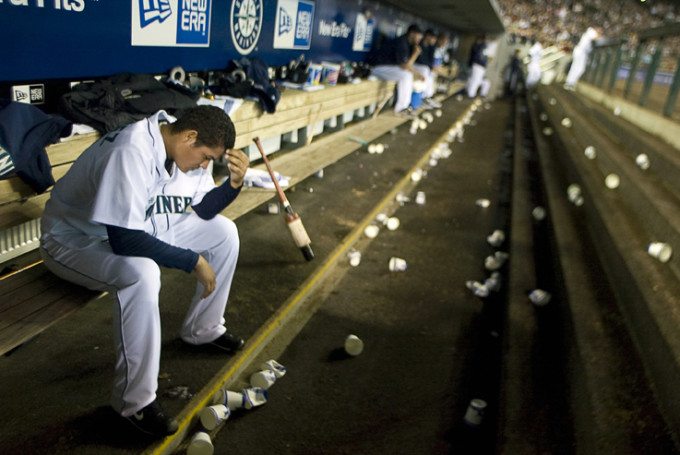
Jim: I actually started taking pictures after he gave me a hand-me-down Argus 35mm range finder for Christmas in 1968 while we were living in Japan. My father, purchased a Pentax 35mm camera and gave me his old camera along with 20 rolls of film. I joined the high school’s camera club and we all ventured forth and traveled throughout Japan on field trips led by photographers who worked for the Pacific Stars and Stripes, the military/civilian newspaper that was located in the Roppongi section of Tokyo.
During the summer months I interned at the paper and was taught by some of the best military photojournalist in the armed forces.
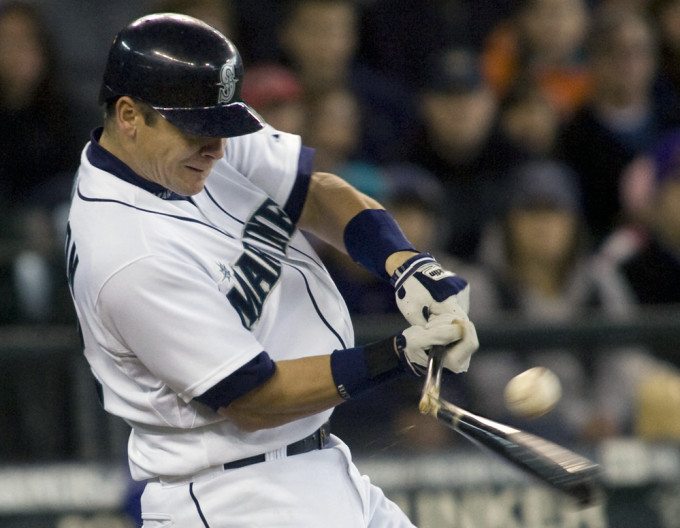
When we departed Japan in 1972 after a five-year-long stay, I had purchased enough cameras and lenses to continue my profession back in Georgia. After six months of freelancing for the Columbus Ledger Inquirer in Columbus, GA., I joined the Navy in 1973 as a Journalist with the hopes of returning to Japan. But, my first tour of duty was in Monterey, CA., in the Naval Post Graduate’s Public Affairs Office from 1973-1977. There I was able to work part-time at the Monterey Peninsula Herald as a sports photographer. In 1977 I was selected to attend the Navy Photojournalism Program at Newhouse School of Public Communications at Syracuse University and graduated in 1978.
I remained in the Navy until June 1983 and was discharged from Pensacola, Fl., where I was the associated editor of Campus Magazine. In July I was hired by the Florida Times-Union in Jacksonville, Fl., where I was nominated for a Pultizer Prize for a pictures I took of grieving parents who’s son was killed in Beruit.
In August 1984, my wife, who was still in the Navy received orders to Japan and I resigned from the paper to pursue a career in freelance. While in Japan I freelanced for the Pacific Stars and Stripes and was sent on assignment to Palau, Siapan, Thailand, Vietnam and throughout Japan. We departed from Japan in 1987 headed back to Pensacola, Fl., where I worked for the Pensacola News Journal as a staff photographer and then was hired by the NW Daily News in Ft. Walton Beach as the Chief Photographer. In 1990 my wife received orders to Teceria, Azores, a group of islands located in the Mid Atlantic Ocean between the Eastern United States and Portugal. I was on an island in the middle of no where so I took two years off and refined my photographic and covered the Island, the people as if I was on assignment for National Geographic Magazine. I made a shopping list and covered the religious festivals, customs, traditions, industry, sports and geography and all facets of Azorean life. I grew photographically in the two years there than anywhere else.
After spending two years (1990 to 1992) on the island once again she received order to Panama. While there I once again shot stock photography of the type of photography I captured in the Azores.
I also freelanced for Gamma Liaison from 1984 until 1996 and shot stock photos that was published in Time, Newsweek and other magazine and newspaper publications.
In 1994 my wife received orders onboard the USS Abraham Lincoln and we headed back to the United States. In 1995 when she retuned from deployment to the Persian Gulf we moved to Port Orchard, WA., and have remained to date.
In 1996 I was hired by Sound Publishing as a staff photographer on the Port Orchard Independent and while there won over 56 Washington Newspaper Publisher Award including “Best of Show” in 2002.
Since 2002 I’ve freelanced for the AP, UPI and European Press Agency (Wire Services) covering University of Washington Husky sports, professional sporting events such as Seattle Mariners, Seahawks, Seattle Storm, Seattle Sounders and hydro races. However, in 2009, I’ve been working for UPI only.
From 12/2002 to 03/2009 I worked with the Seattle Post-Intelligencer newspaper as a staff photographer, but lost the job when hearst Corp, closed the paper down.
Phoblographer: What got you into sports photography?

Jim: I was active in sports during and after high school and still attended sporting events. Being a photographer I was assigned to cover these events. Since working for United Press International (UPI) I’m issued Mariners, Seahawks, Sounders, University of Washington Season Sports press and parking passes. We are provided lineups and rosters which has the numbers and names of players or we check the team’s official web site.
Phoblographer: When you first started to photograph baseball, what were some of the hardest lessons you learned?
Jim: Being positioned in the right place at the right time. Mostly it’s 5% being there and 95% dumb luck. At times there are a lot of slow action in the game, three batters up and three down for a few innings or so. It’s important to pay attention to what’s happening out on the field during the entire game or you’ll miss the shot or get hit by an over thrown ball or foul ball.
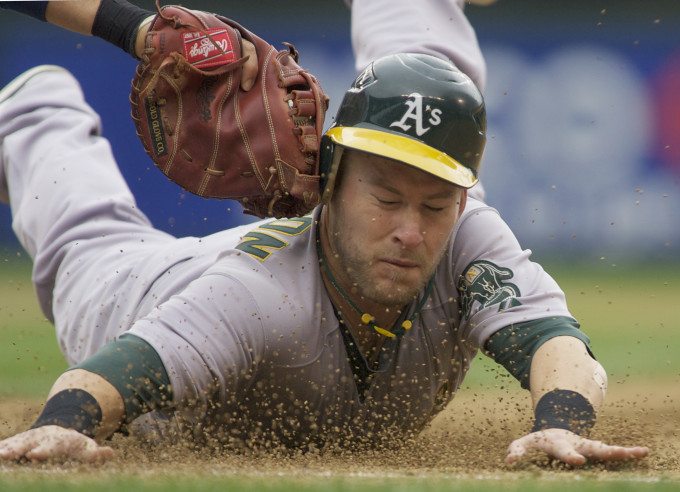
At pro games, photographers get to shoot from one to four pits located on both sides of the dugout near the infield. I like to move around to the different locations, that way I’m able to capture action from various locations. Once the game starts you’re stuck in that shooting location until the half-inning when the teams switch after the 3rd out is completed.
The best location for the 1st inning is in the photo well behind home plate to capture the starting pitchers. Then I like to head off to the 1st base side photo well to get side shots of the pitcher, Mariners dugout. From there you’re able to shoot the pitcher, and infield action of all three bases and home plate. Then, I start to move to other positions to get the same type of action shot in both inside and outside home plate photo wells as well as the third base photo well.
Phoblographer: Since sports moves so fast, do you feel that you have both a creative vision and the foresight to capture moments before they actually happen or do you feel that most of what you do is machine gun shooting style work?
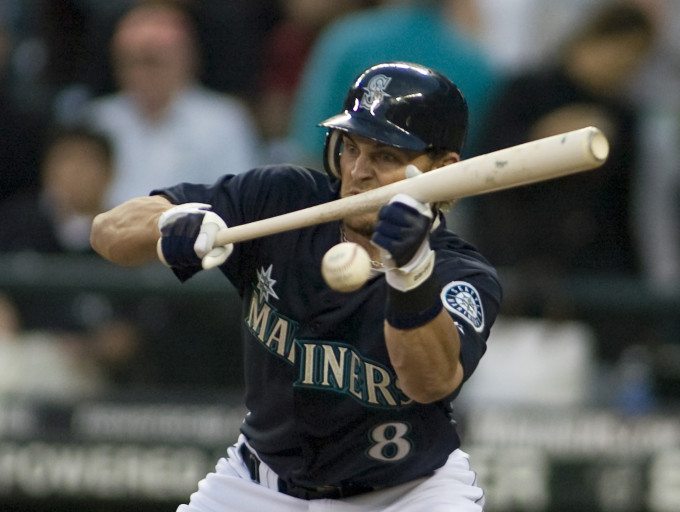
Jim: It takes having a keen knowledge of the any sport you’re covering and timing. Pitches and hits are traveling at least 90 plus miles an hour, so you’ll need to use 1/2500th or higher of a second to shoot.
That’s why I shoot with fast, long lenses at very high speeds when covering baseball. A high shutter speed stops the ball, the bat and keeps players in focus. Plus shooting at an f-stop of 2.8 or f4.0 isolates the players from the background. Your eye automatically travels to the peak action and goes no farther.
Phoblographer: What gear do you use and why?
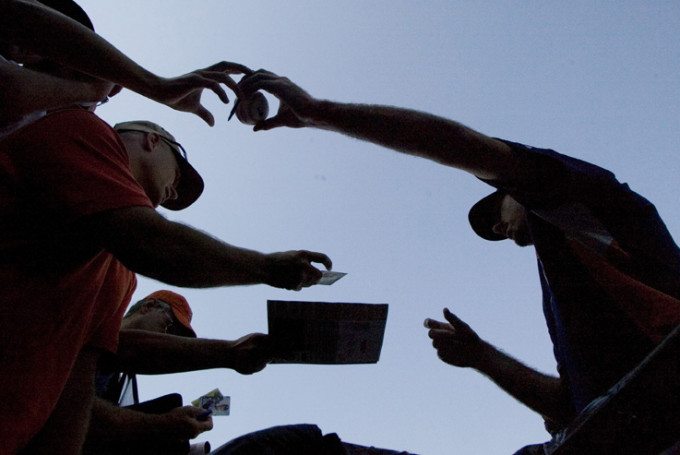
Jim: I own seven camera bodies, two Canon EOS1D MK IV’s, two EOS1D MK III’s, and three EOS1D MK II’s. However, I only use three bodies (both MK IV’s and a MK III while covering a sporting event.) One is equipped with a 28-70mm, another with the 70-200mm and the third has either a 400mm or 300mm lenses. I also carry the Canon 1.4x convertor or Canon 2x with me as well. There’s a method to my madness. I use three bodies because all the focal lengths are covered and I don’t miss the shot by having to change lenses.
Phoblographer: When you’re photographing and culling through the images, what’s usually going through your mind since most editors only use one image at times but you’ve shot maybe over 1,000?
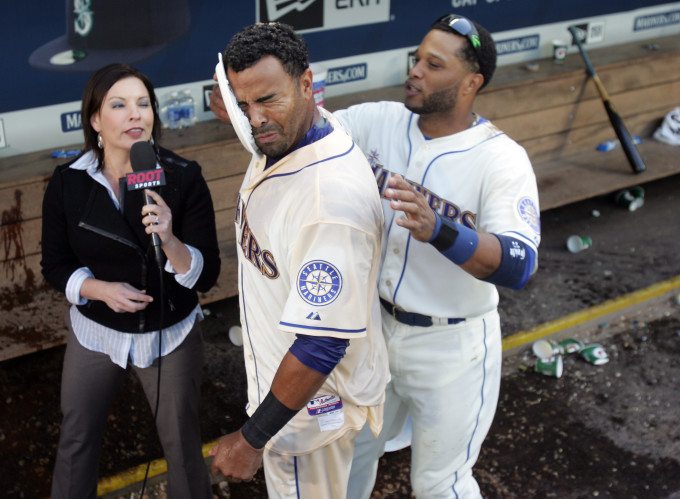
Jim: It’s not uncommon for me to edit over 1,800 plus images a game. I normally use the recording key on the camera to tag my images of important plays. While editing game images in PhotoMechanics, an editing program by CameraBits, once they are downloaded, all I have to do is select tagged and only those images pop up immediately. PhotoMechanics is a great editing program most professional news and sports photojournalists use.
You can make an IPTC templet and add the key wording, caption, metadata to all your images. Plus, you can send the those selected images by email, FTP or upload directly to your clients server/computer from that one program. However I still use Photoshop CS6 to do the post processing and sizing before sending.
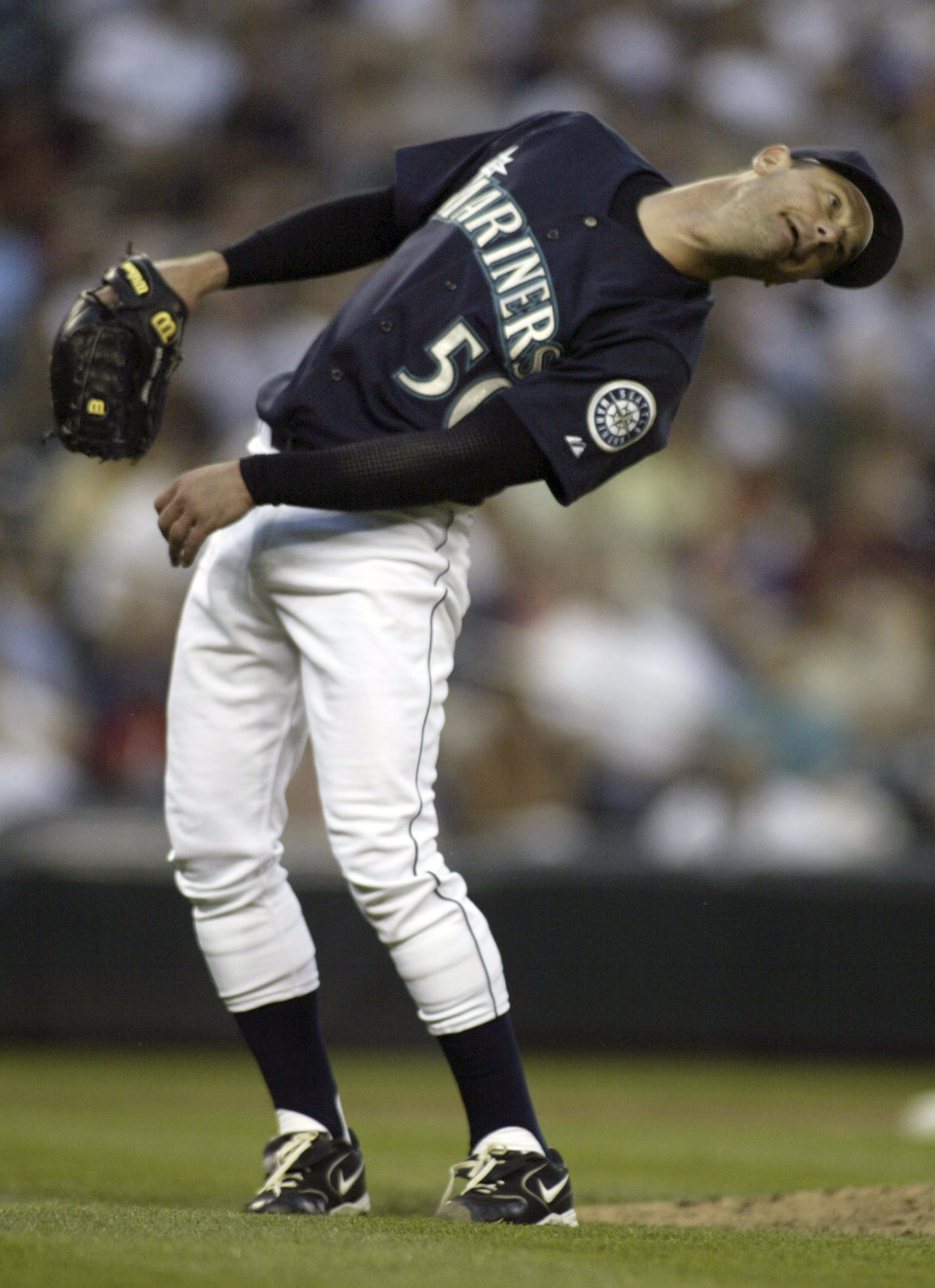
Phoblographer: You expressed to me in your email that you have vision problems. How do you feel this affects you as a photographer and what ways have you tried to compensate?
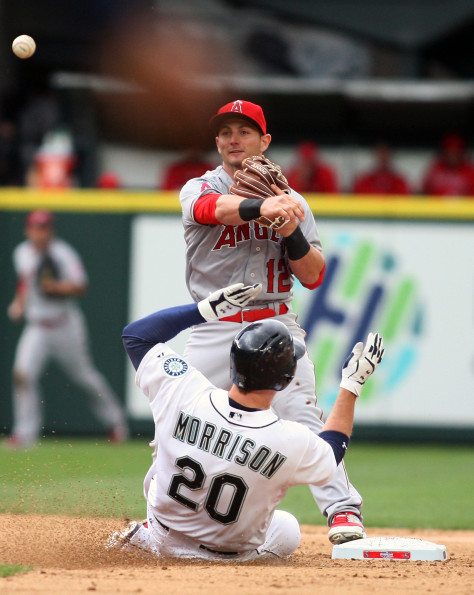
Jim: I’m 63-years-old and been in the business for over 43 years, so I did notice my eyesight change when I hit the big “50”. I have my vision checked yearly and it’s still 20/20, but I’m having a hard time reading small print or looking at the images at the back of the camera, so I have a pair of reading glasses that are always in my ThinkTank bag. I have about five pairs of the same strength at various locations throughout the house.
Phoblographer: Tell us the story of your favorite baseball photo that you’ve captured?
Jim: I don’t think I’ve captured my favorite as of yet, I do have a few that I like. But the one that ranks up there near the top is a picture I captured of Ken Griffey, Jr., being congratulated after hitting a game winning walk-off single against the Toronto Bluejays. Bluejays’ first baseman Lyle Overbay (R) walks off the field as Seattle Mariners’ Ken Griffey Jr. (L) is surrounded by teammates after hitting a single to right field that scored the game winning run in the ninth inning at SAFECO Field in Seattle May 20, 2010. Griffey, pinch-hitting for Josh Wilson, hit a game winning single to right field that scored Milton Bradley that beat the Bluejays 4-3. I was able to capture the opposite emotions in one frame, the happiness of the Mariners players and the dejection displayed by Overbay as he walked off the field with his head down.
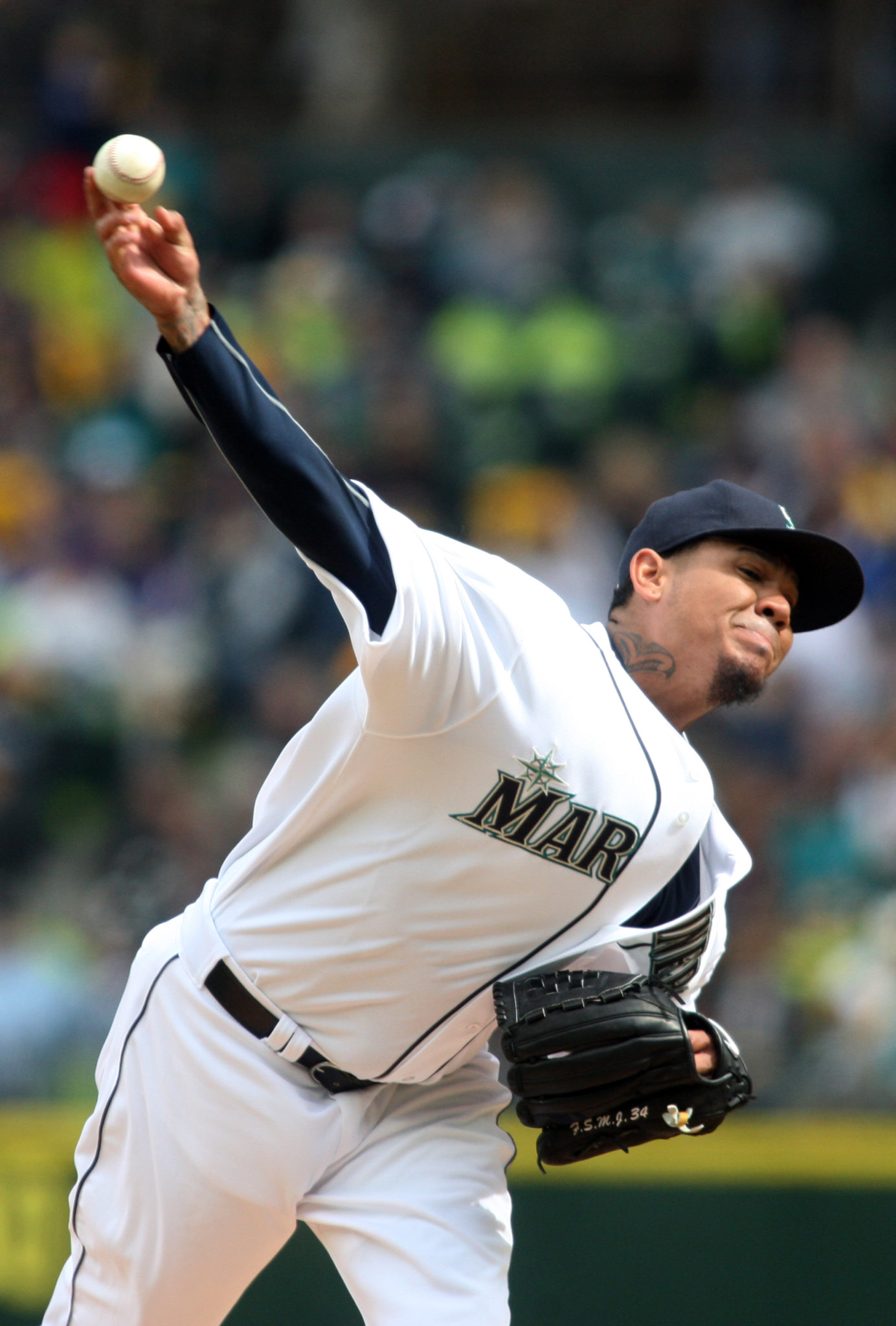
Come to find out this was Griffey’s final MLB hit at Safeco Field. On June 3rd he retired, this was a fitting picture that brought an end to a historic record of his final achievements in a hall of fame career.
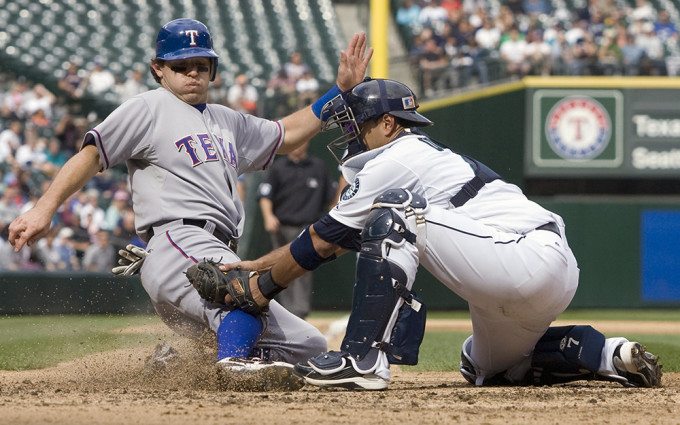
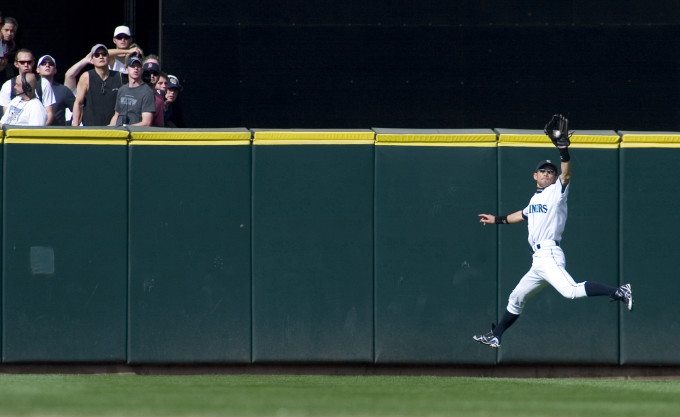

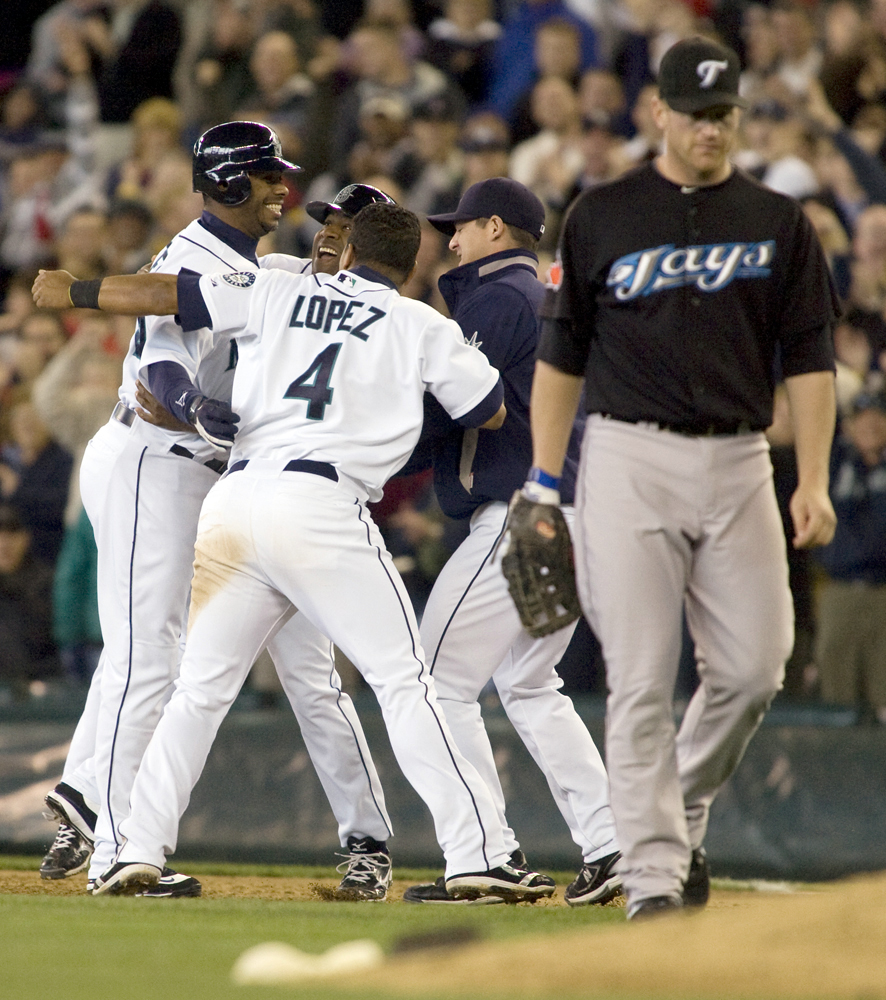
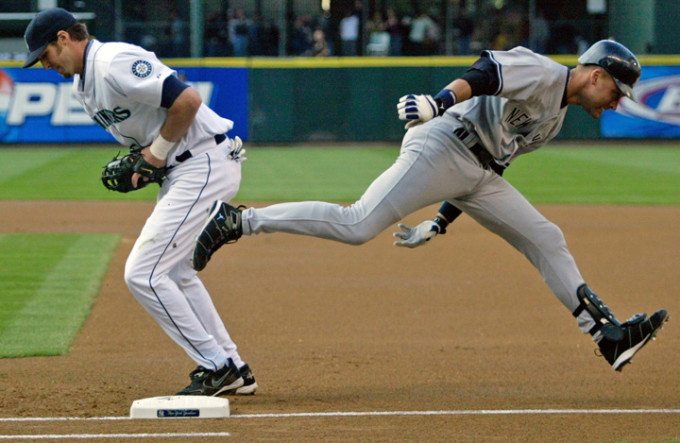
.
